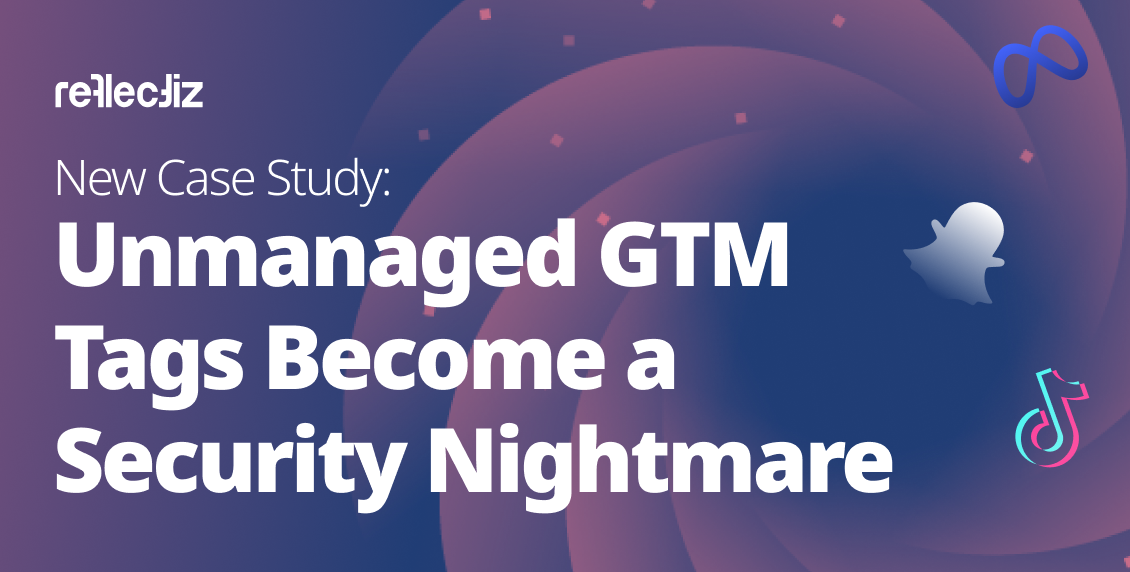Exposure Management: Proven Strategies and Best Practices

Discover how to maintain a robust exposure management strategy with insightful best practices that are crucial for managing sophisticated security threats.
What is exposure management?
Exposure management comprises a series of procedures that enable organizations to gain a comprehensive perspective of their attack surface, allowing them to identify the specific areas within their IT infrastructure that are most vulnerable to cyber threats.
Research and advisory company Gartner brought the term exposure management to prominence in its December 2022 report Predicts 2023: Enterprises Must Expand from Threat to Exposure Management. The report positioned the concept as an important evolutionary step in cyber security practice.
Note that it’s not to be confused with Continuous Threat Exposure Management, CTEM which is similar but more specific. Exposure management has a wider scope, but to put it simply, with this approach the organization identifies all potential vulnerabilities and security gaps across its systems and then prioritizes its responses to them.
Exposure management: Why this, and why now?
You’d be forgiven for asking why this new term might be necessary now, after all, isn’t it enough that organizations already use firewalls, antivirus software, and a host of other active measures to thwart attacks?
Well, Gartner’s thinking is that most of that old-style threat management tends to be reactive. The point about exposure management is that Gartner sees it as a necessary cultural shift within an organization that makes it more proactive, and thus better protected, and many other organizations agree.
To be clear, there is no question that a company shouldn’t still use the reactive approach as well. It should do both, reacting to threats certainly, but also attempting to anticipate them. The main idea underpinning exposure management is simply that prevention is a better place to start than cure. With bad actors escalating both the scale and sophistication of their attacks on an ongoing basis, exposure management seems like a timely addition to the toolbox of security approaches available to organizations of every size.
More of them now have more connections to the Internet (and to each other) than ever, which has increased the number of vulnerabilities they face immensely. Attack vectors such as Internet of Things (IoT) devices have added more endpoints to business networks, and all of this can be particularly problematic for companies that may have only come to the Internet more recently, as some in the manufacturing sector have done.
The benefits of exposure management
Here is a summary of why the shift from vulnerability hunting to exposure management in cybersecurity makes sense:
Proactive Approach: Exposure management systematically identifies and prioritizes vulnerabilities within an organization’s environment before adversaries can exploit them. This proactive approach allows organizations to address potential risks and weaknesses before they can become problems.
Better Security Strategies: By understanding areas of potential risk and weakness, organizations can develop more targeted and efficient security strategies.
Adaptability: An effective exposure management program helps a firm become more adaptable to emerging threats, which is increasingly important in the face of risks like Distributed Denial of Service (DDoS) attacks, ransomware attacks, Magecart and web-skimming, and threats from insiders, etc.
Broader View: Exposure management provides a broad view across the attack surface so your organization can better understand your level of cyber risk and make better business decisions.
Future Threat Reduction: Today’s cybersecurity attackers pivot fast, leaving organizations scrambling to automate controls and deploy security patches to keep up, but such tactics don’t do anything to reduce the likelihood of future attacks. Exposure management prioritizes a response to whatever poses the greatest threat to your business.
Business Risk Management: Enterprise-level systems are sprawling, interconnected masses that could be harboring numerous security issues. Attacking them on a first-come-first-served basis is less effective than prioritizing them according to factors such as urgency, severity, and level of risk posed to the business.
Greater Visibility: Exposure management revolves around achieving better visibility of an organization’s digital attack surface. This is invaluable for vulnerability detection and remediation.
Reduced Risk: Exposure management optimizes risk management through increased visibility and automation. By closing more security gaps earlier, it reduces an organization’s risk of future cyberattacks.
Cost Savings: It’s always cheaper to prevent a cyberattack from happening than to fix it after the fact. Effective exposure management can create security cost savings by closing security gaps before they can be exploited, and may even help to reduce cyber liability insurance premiums.
So, it’s clear that moving from threat management to exposure management allows organizations to take a more proactive stance on cybersecurity, enabling them to identify and address vulnerabilities before they can be exploited. This shift not only enhances an organization’s security posture but also allows it to make better-informed business decisions.
Many organizations focus most of their cybersecurity efforts on threat management through tools like antivirus, firewalls, and intrusion detection systems, but this can still leave exposed vulnerabilities that can still be exploited, things like unpatched systems, misconfigurations, risky employee practices, overly broad access privileges, and more. Identifying and fixing these vulnerabilities reduces weaknesses in the attack surface.
Exposure Management: Strategies and best practices
Here are some key strategies and best practices that organizations can follow to improve their exposure management:
Map the Attack Surface
An attack surface can be described as all the points at which a company’s technological assets come into contact with the outside world. These are the points where an attacker is most likely to focus their efforts to gain access to its systems. From such vantage points, they can steal—then use or sell—your customers’ personal identifying information or payment data, do the same with your proprietary information or launch a ransomware attack, or, as we’ve seen a lot recently, create an initial vantage point that may not be the final goal. Compromising a third-party plug-in or tricking an employee into clicking on an attacker’s phishing email may just be a stepping-stone that sets up a larger-scale attack.
Mapping the attack surface is important because you can’t manage your exposure without defining it and establishing what you need to protect. This is why you need to create and maintain an up-to-date inventory of every element in your attack surface, things like IoT devices, systems, software, data stores, cloud instances, and so on.
Reflectiz can help in the process of mapping your web attack surface. One of its functions is to map your digital supply chain. Once this is done you will receive an alert every time a significant event occurs, such as when a third-party vendor releases a new version of their software that does not comply with security and privacy regulations, when the external server hosting your JS framework gets hacked, or when a mistake occurs in your tag manager configuration that may lead to the unintentional collection of PII data, exposing you to penalties and lawsuits.
Prioritize responses based on potential impact
Under the exposure management approach, you would prioritize the vulnerabilities that would have the biggest impact on your business if they were exploited by attackers. Once the attack surface has been mapped, you can establish this by using risk assessments to identify which of your third-party apps, remote services, CDN repositories, open-source tools, etc., are high-risk and would be most damaging to your business if they were compromised. This approach ensures efficiency, allowing you to focus your security resources on shoring up your defenses of the most relevant assets and areas first.
Continuously scan for vulnerabilities
It’s crucial to conduct frequent vulnerability scans throughout the environment to pinpoint unpatched systems, misconfigurations, risky ports and services, and more. A recommended approach involves establishing a baseline for approved and unapproved app behaviors aligned with your business context. Subsequently, through continuous monitoring, this system can alert you to unauthorized code alterations in all your website components, enabling rapid risk and vulnerability detection. Moreover, it effectively reduces alert fatigue by flagging only genuine and significant alterations, as opposed to every new hash. This facilitates effective communication of cybersecurity risks and compliance concerns with colleagues, allowing you to prioritize your responses.
Enforce the principle of least-privilege
Use audit permissions and access policies to ensure that users have access only to the information and resources that they need to fulfill their roles and responsibilities. It’s important to remove any unnecessary access privileges to limit exposure, and again, as roles can change over time this is something that requires regular review.
Mandate separation of duties
Enforce checks and balances by separating duties across roles, so no single person has too much authority or access.
Institute configuration baselines
Define and maintain standardized hardened configurations for systems, networks, cloud platforms, etc., to limit the risks that come with misconfigurations.
Practice the principle of least functionality
In the same way that human employees should only have access to what they need in order to do the job, systems, and software should be limited to running the processes or accessing the ports and services that they need where these are essential. Unneeded functions should be disabled to reduce the attack surface.
Segment networks/apply micro-perimeters
Isolate and partition systems and data via segmentation and micro-perimeters to limit lateral exposure spread. A micro-perimeter is a security concept that gives each and every service and application in your network its own dedicated perimeter. It is used to model the limits of the network and to mark where each specific device meets the network as a whole. By reducing the security perimeter to each individual application, you can control a user’s access to the application from anywhere and on any device.
Test controls with red teams
Use red team exercises to test exposure management controls and fix any gaps identified before real attackers can find them.
Create vulnerability response plans
Create clear response plans for remediating high and critical severity vulnerabilities based on real-world exploit potential.
Get in touch
The key to an effective exposure management strategy is understanding your digital environment. You begin this by mapping it and putting controls in place, and the Reflectiz solution is an essential component of this process. It helps you to define and maintain a clear understanding of your attack surface, establish a baseline for approved and unapproved application behaviors, and provide robust monitoring that quickly detects and reports on any potentially dangerous activities. Get in touch with us today to find out more.
Subscribe to our newsletter
Stay updated with the latest news, articles, and insights from Reflectiz.
Related Articles
Your Website looks great!
But what’s happening behind the scenes?
Discover your website blind spots and vulnerabilities before it’s too late!







